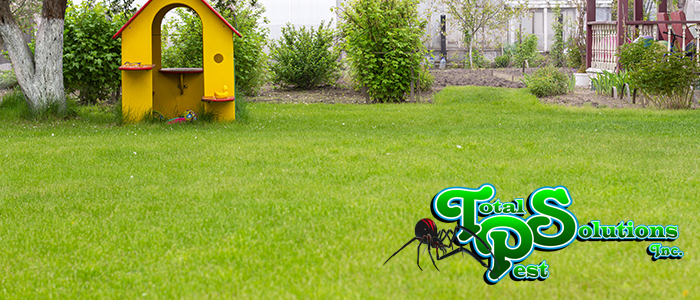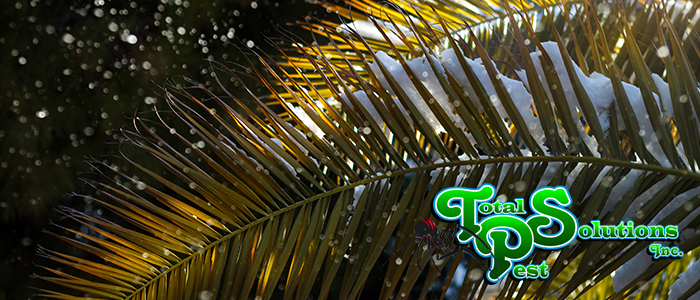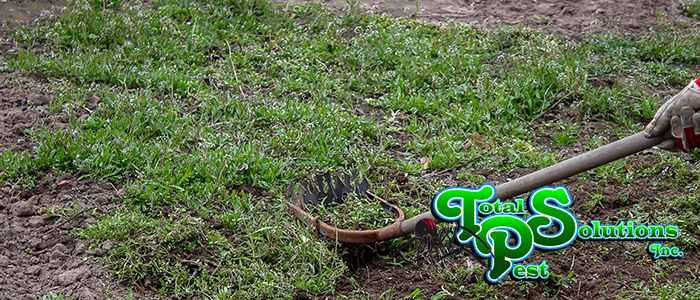
A lush, vibrant lawn is the pride of many Auburndale homeowners. At Total Pest Solutions, we understand that achieving that perfect green carpet requires more than just regular mowing and watering. Proper fertilization is the secret ingredient that can transform your lawn from mediocre to magnificent. In this guide, we’ll explore the ins and outs of lawn fertilization, tailored specifically to the unique climate and soil conditions of Auburndale, Florida.
Understanding the Importance of Lawn Fertilization
Fertilization is not just about making your grass greener; it’s about creating a healthy, resilient lawn ecosystem. Here’s why it matters:
- Nutrient Supplementation
- Florida’s sandy soils often lack essential nutrients
- Fertilizers provide nitrogen, phosphorus, and potassium (NPK) crucial for grass health
- Root Development
- Proper fertilization encourages deep, strong root systems
- Enhanced roots improve drought resistance and overall lawn stability
- Stress Tolerance
- Well-fed lawns better withstand heat, drought, and foot traffic
- Increased resistance to pests and diseases
- Weed Prevention
- Healthy, dense grass naturally crowds out weeds
- Reduces the need for herbicides and manual weed removal
- Environmental Benefits
- Healthy lawns absorb more carbon dioxide and release more oxygen
- Reduces soil erosion and runoff
The Auburndale Advantage: Local Considerations
Fertilizing in Auburndale requires a tailored approach due to our unique conditions:
- Climate Factors
- Long growing season allows for extended fertilization schedules
- High temperatures and humidity affect nutrient uptake and release
- Soil Characteristics
- Predominantly sandy soils drain quickly, affecting nutrient retention
- pH levels can vary, influencing nutrient availability
- Grass Types
- Common Florida grasses like St. Augustine and Bahiagrass have specific nutritional needs
- Understanding your grass type is crucial for proper fertilization
The Science of Fertilization: NPK Ratios
Understanding fertilizer labels is key to successful lawn care:
- Nitrogen (N)
- Promotes leaf growth and green color
- Typically the highest number in the NPK ratio for lawns
- Phosphorus (P)
- Supports root development and early growth
- Usage may be restricted in some areas due to environmental concerns
- Potassium (K)
- Enhances overall health and stress tolerance
- Particularly important in sandy soils
- Secondary and Micronutrients
- Elements like iron, magnesium, and sulfur play vital roles in lawn health
- Often included in specialized Florida lawn fertilizers
Developing a Fertilization Schedule
A year-round approach is necessary for optimal results:
- Spring (March-May)
- Apply a balanced, slow-release fertilizer as growth resumes
- Focus on root development and overall lawn health
- Summer (June-August)
- Use a fertilizer higher in nitrogen to support active growth
- Consider iron supplements to enhance green color without excessive growth
- Fall (September-November)
- Apply a potassium-rich fertilizer to prepare for winter stress
- Reduce nitrogen to avoid late-season growth spurts
- Winter (December-February)
- Limit fertilization unless dealing with specific deficiencies
- Focus on weed control and soil preparation for spring
Best Practices for Fertilizer Application
Proper application techniques ensure maximum benefit and minimal environmental impact:
- Soil Testing
- Conduct annual soil tests to determine specific nutrient needs
- Adjust fertilizer selection based on test results
- Proper Timing
- Apply fertilizer when grass is actively growing
- Avoid application before heavy rains to prevent runoff
- Even Distribution
- Use a spreader for uniform coverage
- Calibrate your spreader for accurate application rates
- Watering In
- Lightly water after application to activate the fertilizer
- Avoid over-watering to prevent nutrient leaching
- Follow Local Regulations
- Be aware of Auburndale’s fertilizer ordinances, especially regarding phosphorus use
- Observe blackout dates during rainy seasons if applicable
- Safety First
- Wear appropriate protective gear when handling fertilizers
- Keep children and pets off treated areas until watered in
The Total Pest Solutions Approach to Fertilization
Our comprehensive lawn care service includes:
- Customized Fertilization Plans
- Tailored to your specific lawn type, soil conditions, and aesthetic goals
- Adjusted seasonally for optimal results
- Professional Application
- Trained technicians ensure precise, even distribution
- Use of high-quality, slow-release fertilizers for long-lasting results
- Integrated Pest Management
- Combining fertilization with pest control for comprehensive lawn health
- Identifying and addressing pest issues that may affect nutrient uptake
- Eco-Friendly Options
- Offering organic and low-environmental impact fertilizers
- Advising on sustainable lawn care practices
- Ongoing Monitoring and Adjustment
- Regular lawn assessments to track progress and identify issues
- Flexible treatment plans that evolve with your lawn’s needs
- Education and Support
- Providing homeowners with lawn care tips and best practices
- Responsive customer service to address any concerns or questions
Common Fertilization Mistakes to Avoid
- Over-Fertilization
- Can lead to rapid, weak growth and increased pest susceptibility
- Potential for environmental harm through runoff
- Improper Timing
- Fertilizing dormant grass or before heavy rains wastes resources
- Can stress the lawn if applied during extreme heat
- Uneven Application
- Results in patchy growth and color inconsistencies
- May lead to fertilizer burn in over-applied areas
- Ignoring Soil pH
- pH imbalances can lock up nutrients, rendering fertilizers ineffective
- Regular pH testing and adjustment are crucial
- Using the Wrong Fertilizer Type
- Generic fertilizers may not address specific needs of Florida lawns
- Fast-release fertilizers can cause growth spurts and nutrient runoff
Beyond Fertilization: Complementary Lawn Care Practices
For truly outstanding results, combine fertilization with:
- Proper Mowing
- Maintain appropriate grass height to support root growth
- Sharp blades for clean cuts that heal quickly
- Efficient Irrigation
- Water deeply but infrequently to encourage deep root growth
- Adjust watering based on rainfall and season
- Aeration and Dethatching
- Improve soil compaction and thatch buildup for better nutrient absorption
- Typically performed annually or as needed
- Overseeding
- Fill in bare spots and enhance lawn density
- Choose grass varieties well-suited to Auburndale’s climate
Conclusion: Your Path to a Picture-Perfect Lawn
Achieving and maintaining a beautiful lawn in Auburndale requires knowledge, effort, and the right approach to fertilization. While it may seem daunting, with the expertise of Total Pest Solutions, you can have the lawn of your dreams without the stress and guesswork.
Our team of lawn care professionals is dedicated to bringing out the best in your Auburndale lawn. We combine scientific knowledge, local experience, and a commitment to customer satisfaction to deliver results you can see and enjoy.
Don’t settle for a mediocre lawn. Contact Total Pest Solutions today to schedule a lawn assessment and learn how our customized fertilization programs can transform your outdoor space. Let’s work together to create a lush, healthy lawn that enhances your home’s beauty and your quality of life in Auburndale, Florida.
continue reading
Related Posts
Winter Palm Care in Lakeland: Cold Snap Protection Strategies Lakeland,
Holiday Pest-Free Homes in Winter Haven: Avoiding Cargo Pests As
Auburndale’s Mole Cricket Damage: Repairing Turf Before Frost As the






